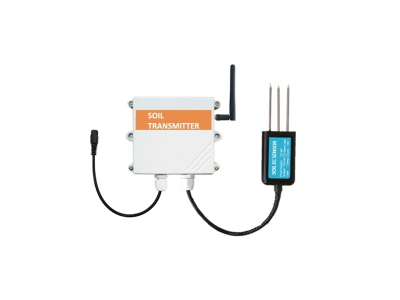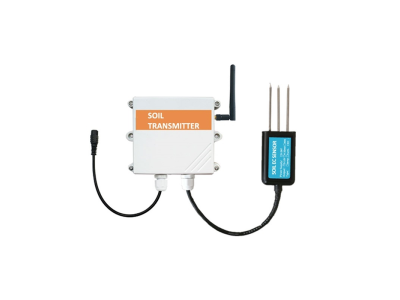Agriculture plays a crucial role in feeding the world's growing population. However, modern agricultural practices face numerous challenges, such as increasing food demand, limited resources, and environmental concerns. To overcome these challenges and maximize efficiency, farmers are turning to innovative technologies like soil sensor monitoring. This article explores how soil sensor monitoring enhances agricultural efficiency, the types of sensors used, their applications in farming practices, and the benefits they offer.
I. The Need for Agricultural Efficiency
With a rapidly expanding global population, the demand for food continues to rise. To meet this demand, farmers must find ways to optimize their productivity and make the most efficient use of available resources. Additionally, sustainable agricultural practices are essential to minimize environmental impact, conserve water, and reduce the use of fertilizers and chemicals.

II. Soil Sensor Monitoring: An Overview
Soil sensor monitoring involves the use of various sensors to measure and monitor key soil parameters in real-time. These sensors provide valuable data on soil moisture, temperature, nutrient levels, and other crucial factors. By continuously monitoring these parameters, farmers can make informed decisions regarding irrigation schedules, fertilization, and crop management practices.
III. Types of Soil Sensors
Soil Moisture Sensors: These sensors measure the water content in the soil, providing information about the soil's ability to retain moisture. This data helps farmers determine when and how much to irrigate, preventing water wastage and ensuring optimal soil moisture levels for plant growth.
Temperature Sensors: Temperature sensors monitor the soil's temperature profile, allowing farmers to understand how temperature variations affect crop development. This information helps in determining suitable planting times, managing heat stress, and optimizing crop growth.
Nutrient Sensors: Nutrient sensors measure essential nutrients in the soil, such as nitrogen, phosphorus, and potassium. By analyzing nutrient levels, farmers can adjust their fertilization practices accordingly, avoiding overuse or underuse of fertilizers and promoting efficient nutrient uptake by plants.
pH Sensors: pH sensors measure the acidity or alkalinity of the soil. Maintaining proper soil pH is crucial for nutrient availability and microbial activity. pH sensors help farmers assess soil health and make necessary adjustments for optimal plant growth.
IV. Applications of Soil Sensor Monitoring in Farming Practices
Precision Irrigation: Soil moisture sensors enable precision irrigation by providing real-time data on soil moisture levels. Farmers can automate irrigation systems to deliver water only when and where it is needed, minimizing water wastage and reducing energy costs.
Nutrient Management: By monitoring nutrient levels in the soil, farmers can optimize fertilization practices. Nutrient sensors help identify nutrient deficiencies or excesses, allowing for targeted and efficient application of fertilizers, reducing costs and minimizing environmental impact.
Disease and Pest Management: Soil sensor monitoring can provide early detection of soil-borne diseases and pests. Changes in soil moisture or temperature patterns may indicate the presence of pathogens or pests, enabling farmers to take appropriate preventive measures and minimize crop losses.
Crop Planning and Yield Optimization: Soil sensor data combined with other environmental variables, such as weather forecasts, can help farmers make informed decisions regarding crop selection, planting schedules, and yield optimization strategies. This information improves resource allocation and enhances overall farm productivity.
V. Benefits of Soil Sensor Monitoring
Resource Efficiency: By providing real-time data on soil conditions, soil sensor monitoring enables farmers to optimize resource usage, including water, fertilizers, and energy. This reduces waste, lowers costs, and minimizes environmental impact.
Enhanced Crop Quality and Yield: Precise monitoring of soil parameters ensures that crops receive adequate moisture, nutrients, and optimal growing conditions. This leads to improved crop quality, increased yields, and better profitability for farmers.
Environmental Sustainability: Efficient resource management through soil sensor monitoring promotes sustainable agricultural practices. By minimizing water usage and reducing the application of fertilizers and chemicals, farmers can protect water resources, minimize soil degradation, and reduce pollution.
Data-driven Decision Making: Soil sensor monitoring provides farmers with accurate and real-time data, empowering them to make informed decisions about crop management practices. This data-driven approach leads to better planning, increased productivity, and improved farm profitability.
VI. Future Perspectives and Advancements
The field of soil






